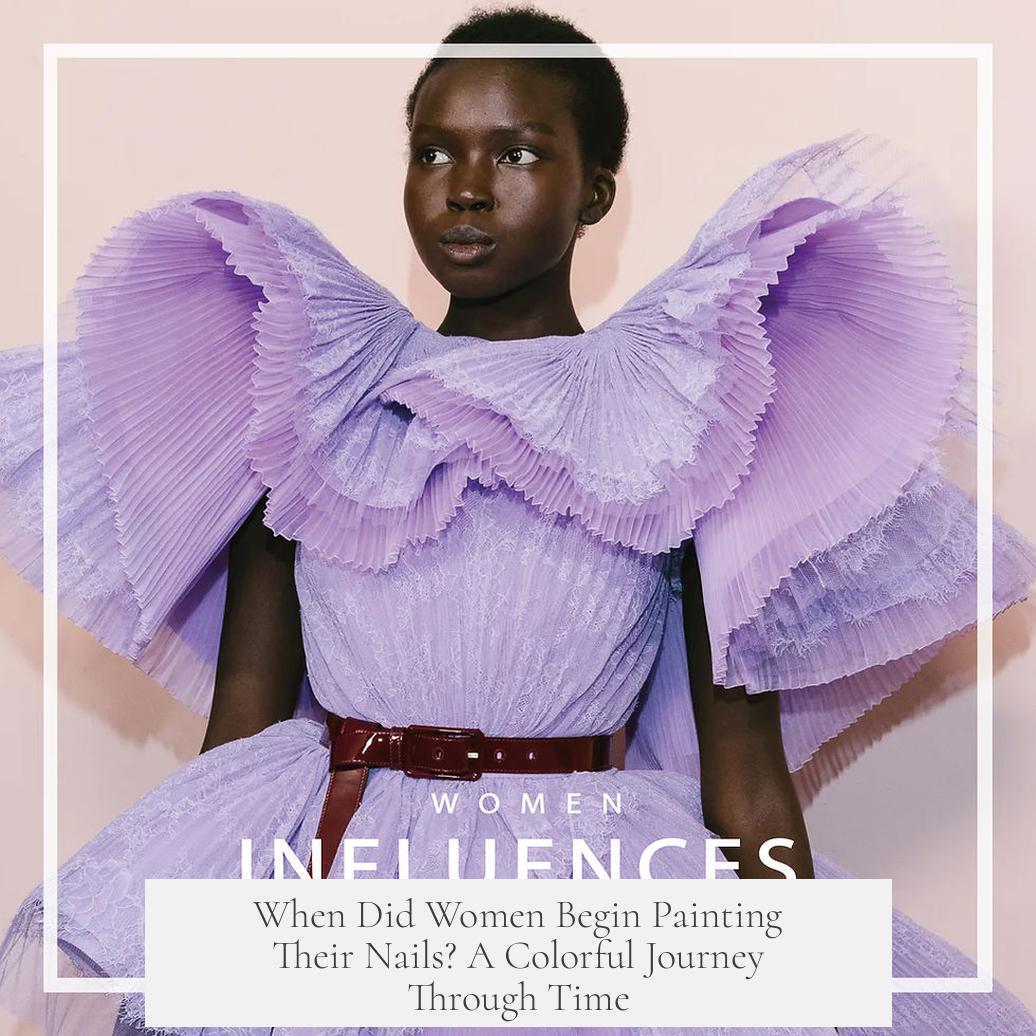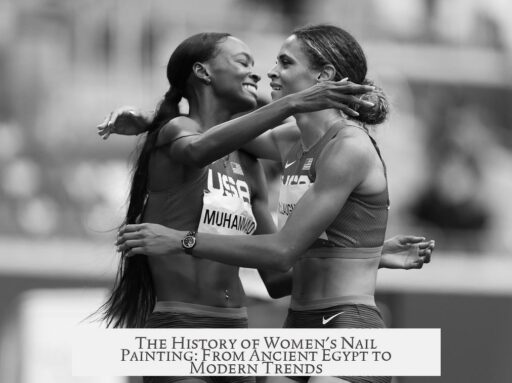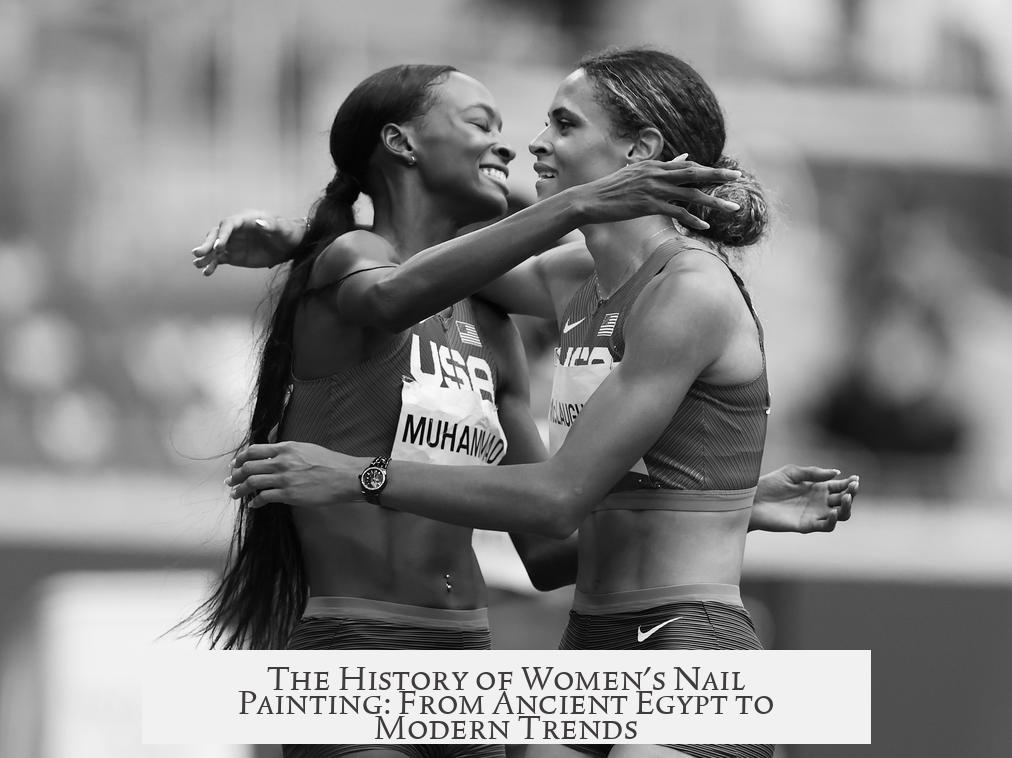Women began painting their nails thousands of years ago, with origins tracing back to ancient civilizations such as China and Egypt. The practice initially served as a visual indicator of social status and cultural identity rather than purely aesthetic decoration.
In ancient China, nail painting dates as far back as 3000 BC. Historical records highlight the Zhou Dynasty (1046-256 BC) when nail colors directly reflected social rank. For instance, gold nail polish was exclusive to royalty. Later on, by the Qin Dynasty (221-206 BC), colors like red and black replaced gold for nobles and royal family members. The belief that the color of nails symbolized one’s social position was deeply ingrained in Chinese culture.
Similarly, ancient Egyptian women frequently painted their nails by 3000 BC. Red was particularly privileged and symbolized great importance in their society. Prominent figures like Queen Nefertiti chose ruby red for both fingernails and toenails, while Cleopatra favored a deep rust red shade. Lower social classes could only wear pale hues; adopting the rich colors reserved for queens and nobility was socially unacceptable. Nail painting extended beyond women, as warriors such as Egyptian, Babylonian, and early Roman commanders also meticulously painted their nails, sometimes matching their lips’ shapes. This shows nail painting had cultural and possibly symbolic significance across genders.
The meticulous care devoted to nails in these ancient cultures indicates that manicuring was an established art form. Archaeologists have found manicure tools in royal tombs, such as those unearthed in Ur, supporting the idea that nail care was a sophisticated ritual. Well-manicured nails acted as a marker of civilization and culture, distinguishing idle aristocrats from laboring classes. This cultural symbolism reinforced social hierarchy in multiple early societies.
Nail painting in ancient times was more than cosmetic; it conveyed identity and societal rank. The colors chosen and the care applied signaled wealth, power, and status – traits that transcended simple beauty. It is noteworthy how some ancient rulers specifically mandated colors for different ranks, demonstrating nail paint’s role in social regulation.
The modern iteration of nail polish as a cosmetic product began much later. The 1920s marked a turning point with the introduction of lacquer technology, giving rise to the nail polish products commonly recognized today. Before this innovation, nail care involved manicure routines that polished nails using abrasive powders to achieve shine. People then added color using stains rather than lacquer-based polishes.
The earliest marketed nail polish, introduced in the 1920s, was a clear lacquer designed to boost the shine of nails. This product was labeled “nail polish” due to its ability to impart high gloss, marking the beginning of the modern nail care industry. Over time, this led to the development of colored lacquers and the widespread popularity of nail decoration among women worldwide.
In summary, women began painting their nails in ancient times, primarily in China and Egypt, where the practice symbolized social ranking and cultural importance. Nail painting evolved from a marker of status to a personal beauty practice over thousands of years. The 20th-century development of lacquer technology formalized nail polish as a cosmetic product used for aesthetics rather than social signaling alone.
- Ancient Chinese used nail color to indicate social rank as early as 3000 BC.
- Egyptian queens painted nails red to signify importance; lower classes used pale hues.
- Manicuring was a refined cultural practice backed by archaeological evidence.
- Before 1920, nails were polished with powders and stains but not lacquer.
- Modern nail polish emerged in the 1920s with newly developed lacquer technology.
When Did Women Begin Painting Their Nails? A Colorful Journey Through Time

Women began painting their nails as far back as 3000 B.C. This isn’t some recent beauty fad sparked by Hollywood stars or social media. The origins trace back over 5,000 years to ancient civilizations like China and Egypt where nail color wasn’t just about fashion, but a strict social code.
Imagine living in ancient China, where the color of one’s nails literally signaled your social rank. Nails weren’t just prettied up for the heck of it but served as a vibrant badge of status. By the time of the Zhou Dynasty (1046-256 BC), gold-colored nails were reserved for royalty. That’s right—only the highest social tiers dared to flaunt such luxurious hues.
Interestingly, the actual ingredients for nail varnishes in China involved natural products: gum arabic, egg white, gelatin, and beeswax, mixed together by hand. That sounds like Grandma’s secret recipe for perfection, but it was used to create early versions of lacquer by the third millennium B.C. The Ming Dynasty later standardized black and red as royal nail colors, showing just how important these hues were.
Meanwhile, Down in Egypt…
At about the same time, in Egypt circa 3000 B.C., nail painting was also quite the common ritual. However, their color system was a bit different. Red was a signature of great importance. Queen Nefertiti famously painted her fingernails and toenails ruby red, while Cleopatra preferred a deep rust red. Lower classes stuck to pale hues—in fact, wearing the queen’s colors could’ve been dangerous! This demonstrates that nail painting was not only about beauty but also about marking social boundaries.
And it wasn’t just women who painted their nails. Warriors, especially Egyptian, Babylonian, and early Roman commanders, painted nails to match their lips. Talk about coordinated battle style!
Archaeologists have uncovered nail care kits in royal tombs like those at Ur. This solidifies the idea that nail care was an established art form, symbolizing civilization and a lifestyle free from manual labor. Immaculately manicured nails distinguished the idle aristocrats from the working masses—an ancient version of luxury statements on social media today!
Fast Forward to the Modern Era—The Rise of Nail Polish
The true revolution of nail painting happened in the 1920s, fueled by advances in lacquer technology. You see, during World War I, scientists developed nitrocellulose for explosives. When heated and dissolved, nitrocellulose formed a hard, glossy film after the solvents evaporated—a perfect base for nail lacquer.
Here’s a fun twist: The automobile industry played a role in nail polish development. They perfected nitrocellulose lacquer for painting cars because it dried faster and looked better than oil-based paints. Cosmetics companies borrowed this technology, and soon, clear nail polish hit the market, giving nails an unprecedented shine.
Before this, women still cared for nails but relied on abrasive powders to buff nails to a shine and used stains for color—definitely less convenient.
Then came 1930: Charles Revson had a lightbulb moment and added pigments to lacquer, creating opaque and colorful nail polish. By 1932, Revson founded Revlon, which went on to produce the first high-quality nail enamel, forever changing the beauty game.
What Does This History Teach Us?
When did women begin painting their nails? Long before Instagram influencers or nail salons! It began in ancient civilizations where nail color marked your place in society, continued as an art form symbolizing culture, and evolved into a glamour staple via technological innovation in the early 20th century.
Today’s nail polish owes its roots to ancient royal courts and wartime scientific breakthroughs. So next time you swipe on a fresh coat of polish, you’re participating in a tradition that spans millennia.
Tips for Appreciating Nail Polish Beyond Cosmetic Appeal
- Remember the meaning: Ancient nail colors signaled power or status. Picking your nail color can still communicate personality or mood.
- Care for your nails: Like ancient manicuring tools found in tombs, investing in nail health is a timeless priority.
- Try classic colors: Black, red, or even gold-inspired polish can connect you to a rich history of elegance and prestige.
Who knew nails had so much history? It makes you wonder: what stories will future generations tell about our nail trends today?




